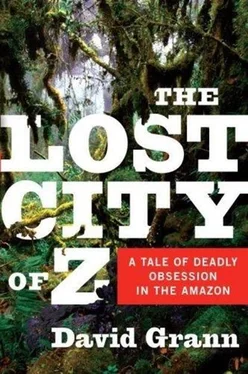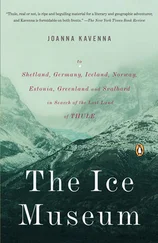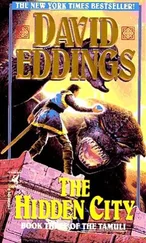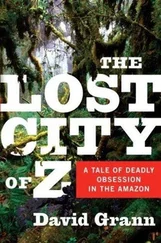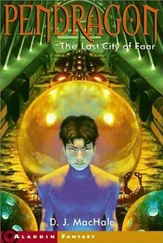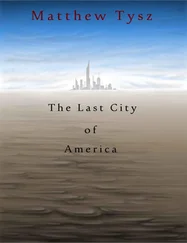With his path to Z again clear, Fawcett could no longer even work up his notorious wrath toward Lynch, who had returned to London in disgrace. “He did precipitate this exploration, which is something to his credit, and The Gods select curious agents for their purposes sometimes,” Fawcett wrote the RGS. Plus, he said, “I am a great believer in the Law of Compensation.” He was sure that he had sacrificed all he had to give to reach Z. Now he hoped to receive what he called “the honour of immortality.”

AN UNEXPECTED CLUE
Yeah, I've heard of Fawcett,” a Brazilian guide who offered tours of the Amazon told me. “Isn't he the one who disappeared looking for El Dorado or something?” When I mentioned that I was seeking a guide to help me trace Fawcett's route and look for Z, he replied that he was “muito ocupado,” which seemed to be a polite way of saying, “You're out of your mind.”
It was difficult to find someone not only willing to make the journey into the jungle but also with ties to the indigenous communities in Brazil, which function almost as autonomous countries, with their own laws and governing councils. The history of the interaction between brancos and indios- whites and Indians-in the Amazon often reads like an extended epitaph: tribes were wiped out by disease and massacres; languages and songs were obliterated. One tribe buried its children alive to spare them the shame of subjugation. But some tribes, including the dozens that remain uncon-tacted, have managed to insulate themselves in the jungle. In recent decades, as many indigenous people have organized themselves politically, the Brazilian government has stopped trying to “modernize” them and has worked more effectively to protect them. As a result, some Amazon tribes, particularly those in the Mato Grosso region, where Fawcett disappeared, have flourished. Their populations, after being decimated, are growing again; their languages and customs have endured.
The person I eventually persuaded to accompany me was Paolo Pinage, a fifty-two-year-old former professional samba dancer and theater director. Though Paolo was not of Indian descent, he had previously worked for FUNAI, the agency that succeeded Rondon's Indian Protection Service. Paolo shared its “Die if you must, but never kill” edict. During our initial phone conversation, I had asked him if we could penetrate the same region that Fawcett had, including part of what is now Xingu National Park, Brazil's first Indian reservation, which was created in 1961. (The park, along with an adjoining reservation, is the size of Belgium and is one of the largest swaths of jungle under Indian control in the world.) Paolo said, “I can take you there, but it's not easy.”
Entering Indian territories, he explained, required elaborate negotiations with tribal leaders. He asked me to send him medical records attesting that I carried no contagious diseases. Then he began approaching various chiefs on my behalf. Many of the tribes in the jungle now had shortwave radios, a more modern version of what Dr. Rice had used, and for weeks our messages were relayed back and forth as Paolo assured them that I was a reporter and not a garimpero, or “prospector.” In 2004, twenty-nine diamond miners trespassed onto a reservation in western Brazil, and members of the Cinta Larga tribe shot them or beat them to death with wooden clubs.
Paolo told me to meet him at the airport in Cuiabá. Although none of the tribes had agreed to my visit, he seemed optimistic when he greeted me. He was carrying several large plastic containers, instead of a suitcase or a backpack, and had a cigarette dangling from his lip. He wore a camouflage vest with myriad pockets, stuffed with supplies: a Swiss Army knife, a Japanese anti-itch medicine, a flashlight, a bag of peanuts, and more cigarettes. He resembled someone returning from an expedition, not embarking on one. His vest was ragged, his face was bone thin and covered with a gray-tinged beard, and his bald head had been seared by the sun. His English pronunciation was shaky, yet he spoke as fast as he smoked. “Come, come, we go now,” he said. “Paolo take care of everything.”
We took a taxi to the center of Cuiabá, which was no longer the “ghost town” Fawcett had described but had an air of modernity, with paved roads and a few modest skyscrapers. Brazilian settlers had once been lured into the interior by rubber and gold. Now the primary temptation was the high price of commodities from ranching and farming, and the city served as a staging ground for these latest pioneers.
We checked into a hotel named El Dorado (“A funny coincidence, isn't it?” Paolo said) and began making preparations. Our first challenge was to ensure that we correctly divined Fawcett's route. I filled Paolo in about my trip to England and about everything Fawcett had done- including planting false leads and using ciphers-to conceal his course.
“This colonel goes to many lengths to hide something that no one has ever found,” Paolo said.
I spread the relevant documents that I had obtained in British archives on a wooden table. Among them were copies of several of Fawcett's original maps. They were meticulous, recalling pointillist paintings. Paolo picked one up and examined it for several minutes under the light. Fawcett had printed “UNEXPLORED”in bold letters atop one image, which depicted the forests between the Xingu River and two other major tributaries of the Amazon. On another map, he added several notations: “small tribes… believed to be friendly;” “very bad Indian tribes-names unknown;” “Indians probably dangerous.”
One of the maps seemed somewhat crudely drawn, and Paolo asked if Fawcett had made it. I explained that a notation on the map-which I had found among several old documents from the North American Newspaper Alliance-indicated that it had belonged to Raleigh Rimell. He had sketched on the map the expedition's route and given it to his mother. Although he made her promise to destroy it after he left, she had held on to it.
Paolo and I agreed that the documents confirmed that Fawcett and his team, after leaving Cuiabá, had proceeded north, to the territory of the Bakairí Indians. From there they had gone to Dead Horse Camp, and then, presumably, deep into what is today Xingu National Park. In the route that Fawcett had supplied in confidence to the Royal Geographical Society, he wrote that his party would turn due east around the eleventh parallel south of the equator and continue past the River of Death and the Araguaia River, until they reached the Atlantic Ocean. Fawcett noted in his proposal that it was preferable to maintain an eastward trajectory, toward Brazil's coastal regions, since it “would preserve a higher level of enthusiasm than one proceeding farther and farther into the wilds.”
Yet one segment of the route Raleigh had drawn seemed to contradict this. At the Araguaia River, Raleigh indicated, the expedition would turn sharply northward, instead of continuing eastward, and would pass from Mato Grosso into the Brazilian state of Pará, before exiting near the mouth of the Amazon River.
“Maybe Raleigh made a mistake,” Paolo said.
“That's what I thought, too,” I said. “But then I read this.”
I showed him the last letter that Jack had sent to his mother. Paolo read the line I had highlighted: “Next time I write will probably be from Para.”
“I think Fawcett kept this last piece of his route secret even from the RGS,” I said.
Paolo seemed increasingly intrigued by Fawcett, and with a black pen he began to trace Fawcett's route on a clean map, excitedly ticking off each of our intended destinations. Finally, he took his cigarette out of his mouth and said, “On to Z, no?”
Читать дальше
Конец ознакомительного отрывка
Купить книгу
